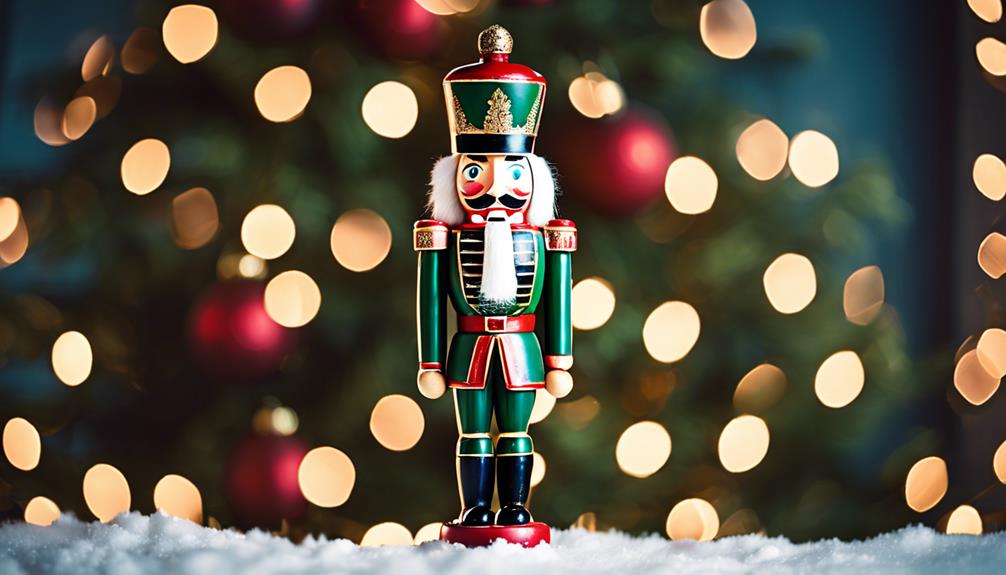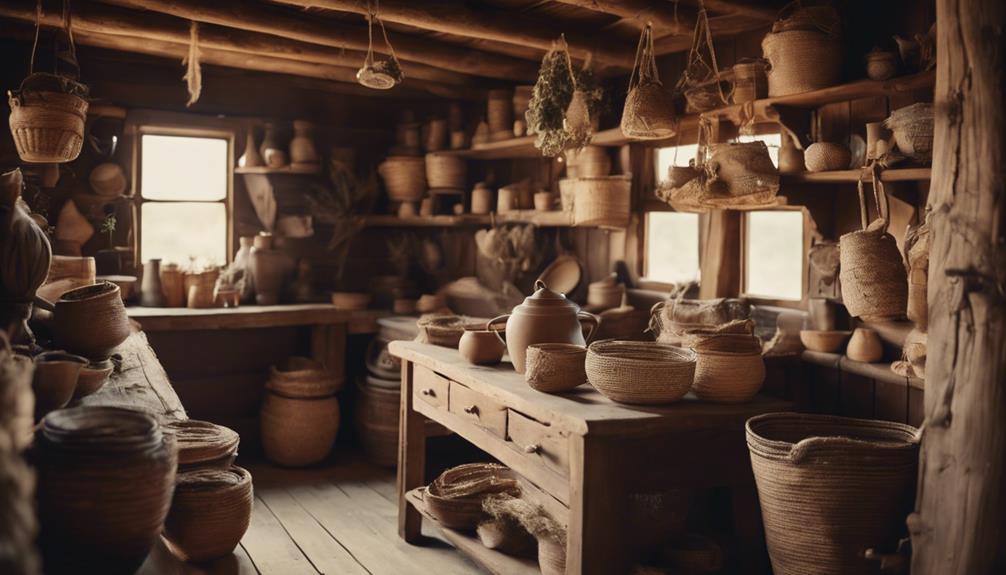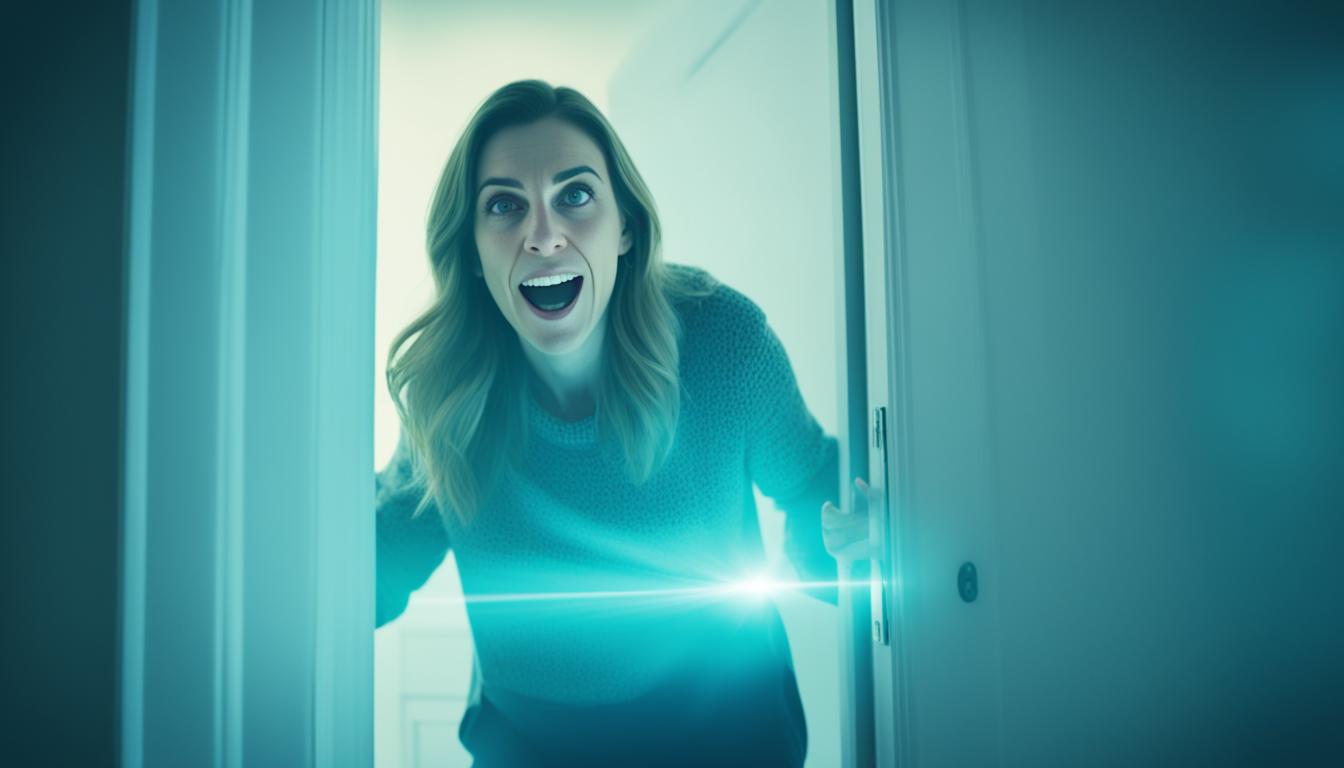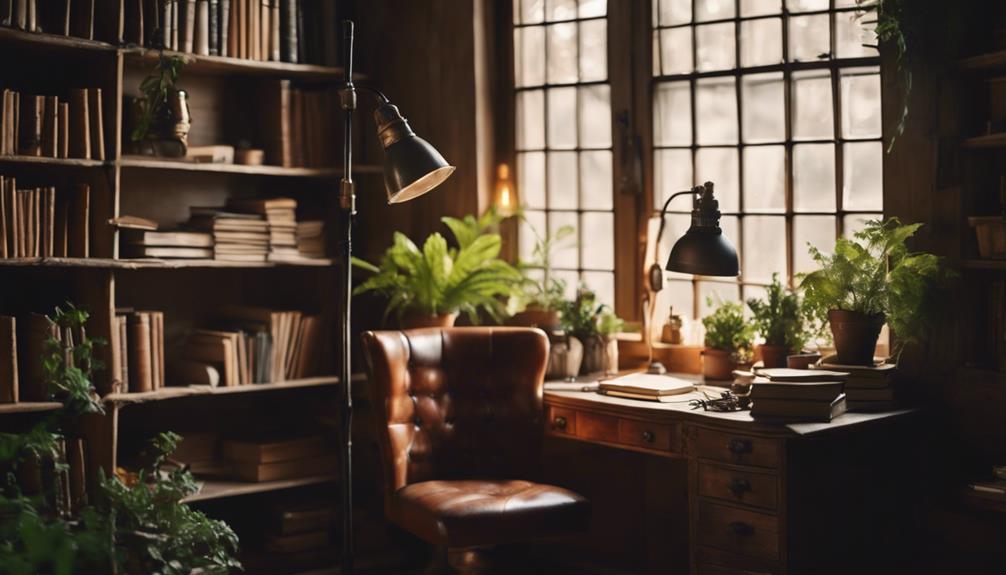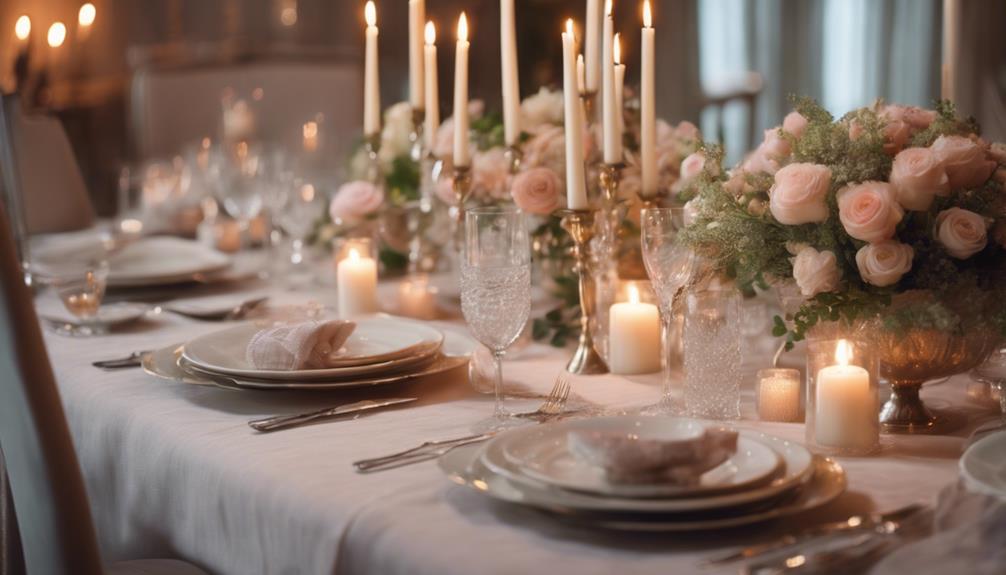Nutcrackers embody old-world charm that takes you back to Christmas past. Originating in the Ore Mountains of Germany, these whimsical figures evolved from practical tools to beloved holiday symbols. With their exaggerated soldier-like features, they bring a playful spirit, reminding you of festive traditions. Each nutcracker carries a magical story, inspired by E.T.A. Hoffmann's enchanting tale and Tchaikovsky's memorable ballet. Hand-painted and crafted with care, they add vibrant nostalgia to your holiday décor. As you explore their enchanting history, you'll discover the timeless allure these collectibles hold for your Christmas celebrations.
Key Takeaways
- Nutcrackers originated in the German Empire, reflecting traditional craftsmanship and the whimsical charm of Christmas past.
- Their soldier-like designs symbolize protection and embody the festive spirit of the holiday season.
- The evolution from practical tools to decorative art highlights the rich history and nostalgia associated with nutcrackers.
- E.T.A. Hoffmann's tale and Tchaikovsky's ballet connect modern celebrations to enchanting holiday storytelling traditions.
- Hand-painted, authentic nutcrackers evoke a sense of nostalgia and are cherished collectibles reflecting Christmas heritage.
Origins of the Nutcracker
Nutcrackers, originally crafted as simple tools in the Ore Mountains of the German Empire, have evolved into cherished symbols of the holiday season. These unique creations had humble origins, serving primarily to crack nuts. However, as time passed, nutcracker designs transformed, taking on exaggerated soldier-like features, which were often a playful mockery of neighboring soldiers.
Folklore tells us about a toymaker from Seiffen who gained fame by inventing a puppet with a robust jaw, effectively cracking nuts and paving the way for future designs.
As the years rolled on, nutcrackers shifted from mere functional tools to stunning pieces of decorative art. They became symbols of protection against evil spirits, making them popular as Christmas ornaments.
The cultural significance of the nutcracker further solidified with the premiere of the Nutcracker ballet, based on E.T.A. Hoffmann's tale, 'The Nutcracker and the Mouse King,' in 1892. This holiday tradition continues to enchant audiences, reminding you of the rich Old World origins of these whimsical figures.
The Soldier Aesthetic
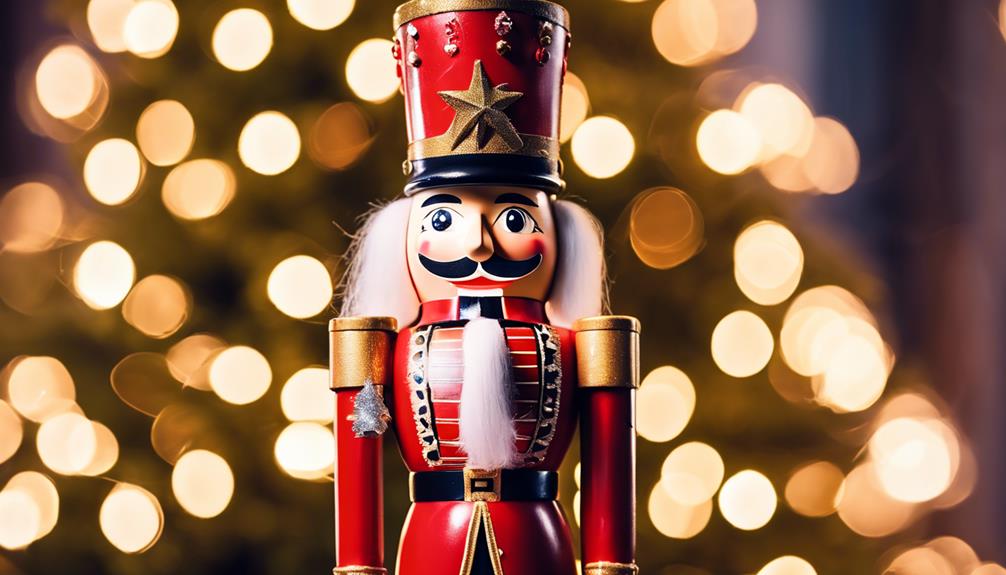
With their exaggerated soldier-like features, these festive figures embody a playful blend of humor and artistry that celebrates the spirit of the season. Originating in the Ore Mountains of the German Empire, nutcrackers evolved from practical tools into symbols of holiday traditions. Their designs, often featuring bared teeth and wild eyes, reflect a mockery of struggling soldiers, turning resistance into a delightful aesthetic.
As you explore these nutcrackers, you'll notice how they became cherished decorative art, especially during the Christmas season. Their craftsmanship showcases the artistry of carvers who transformed simple wood and metal into enchanting figures. Each nutcracker not only serves as a whimsical ornament but also stands as a protective symbol meant to ward off evil spirits during winter.
This soldier aesthetic captures the essence of tradition, merging humor with a sense of security. By bringing these charming figures into your home, you embrace a piece of history that connects the festive spirit to the legacy of the German Empire. Nutcrackers, with their unique blend of aesthetics and symbolism, truly enhance the magic of the holiday season.
Magical Folklore and Stories
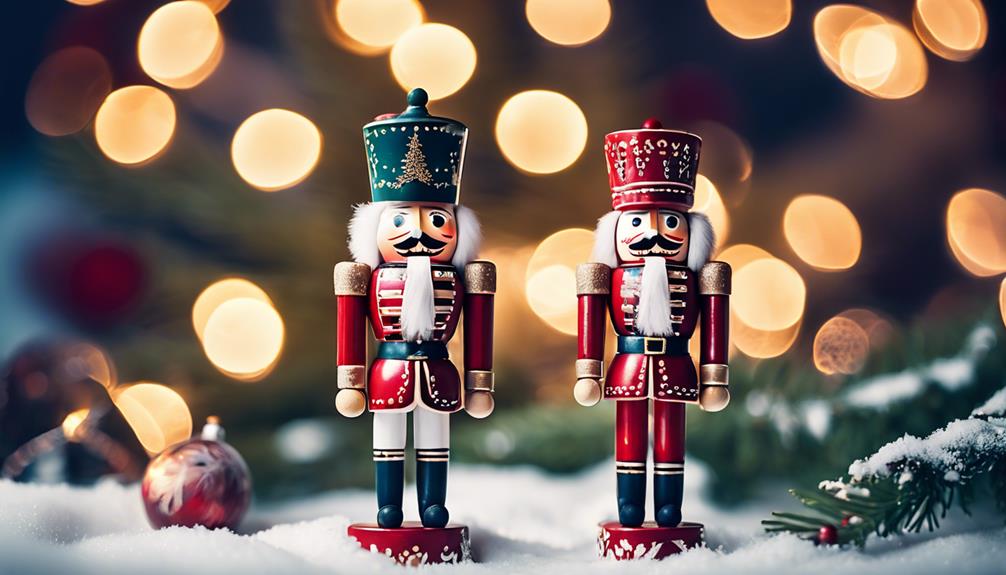
The whimsical charm of nutcrackers is deeply intertwined with magical folklore and stories that celebrate their enchanting origins. Picture a toymaker from the German village of Seiffen, who created a puppet designed to crack nuts, inspired by a farmer's quest for a better solution. This Nutcracker evolved from a practical tool into a beloved Christmas ornament, symbolizing protection and the warding off of evil spirits during the holiday season.
Initially, the design—with its wild eyes and bared teeth—mocked the struggles of soldiers, but it soon became a cherished part of festive traditions. Folklore tells us how this transformation into a festive figure brought warmth and magic into winter nights. The Nutcracker's legacy further flourished through E.T.A. Hoffmann's story, 'The Nutcracker and the Mouse King,' which solidified its place in holiday storytelling.
As you decorate your home this Christmas, consider how each nutcracker you display carries with it a piece of this magical folklore, connecting the past and present, and inviting the spirit of the season into your celebrations. Embrace the tradition, and let these enchanting figures transport you to a world of wonder.
Nutcracker Ballet's Christmas Legacy

As you immerse yourself in the holiday spirit, you'll find that the Nutcracker ballet has become an enduring symbol of Christmas magic, enchanting audiences year after year.
This beloved Christmas tradition, inspired by E.T.A. Hoffmann's tale, features Tchaikovsky's ballet score that captivates with its iconic melodies. George Balanchine's 1954 adaptation solidified its place in American culture, making it a staple during Christmas time.
Picture the enchanting elements that make this ballet so special:
- A magical narrative that unfolds on Christmas Eve
- The Dance of the Sugar Plum Fairy, a highlight of Tchaikovsky's score
- Festive performances by renowned companies like the San Francisco Ballet
- Annual revenue generated, supporting the arts during the holiday season
- Diverse adaptations reflecting local culture, celebrating community spirit
The Nutcracker ballet is more than just a performance; it's a classical ballet experience that brings families together.
Each December, as you watch the dancers bring this timeless story to life, you'll understand why it remains a cherished holiday tradition, evoking nostalgia and wonder in audiences of all ages.
The Role of Nutcrackers Today
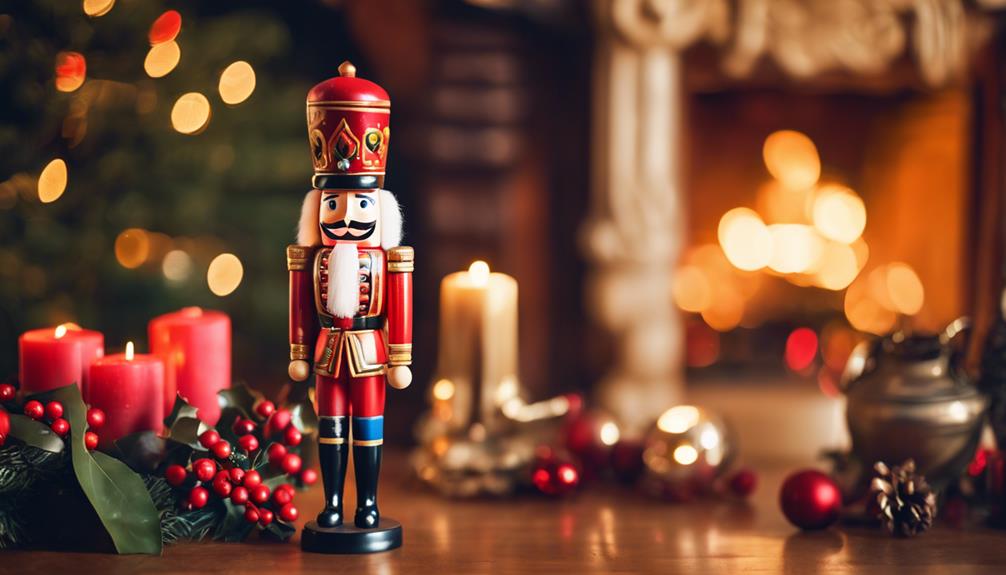
Nutcrackers have transformed from simple kitchen tools into beloved holiday symbols that embody the spirit of Christmas and the enchantment of the Nutcracker ballet. Today, they serve not just as decorative items but also as cherished collectibles that enhance your holiday décor.
With their vibrant colors and intricate designs, modern nutcrackers often prioritize ornamental features, becoming standout pieces in your Christmas decorations. These charming figures are steeped in tradition, reflecting an old-world craftsmanship that many collectors seek.
Authentic, hand-painted nutcrackers, particularly those inspired by the Nutcracker ballet, evoke a sense of nostalgia and joy, making them a popular choice during the festive season. As you place nutcrackers in your home, they serve as more than mere décor; they symbolize the protective spirit of Christmas, once believed to ward off evil spirits.
The growing demand for these timeless collectibles has markedly contributed to an $8 billion Christmas decoration market. So, whether you're continuing a family tradition or starting a new one, nutcrackers will certainly enhance your holiday celebrations and transport you to the magic of Christmas past.
Conclusion
As you embrace the charm of these old-world nutcrackers, aren't you reminded of the magic and warmth of Christmases long gone?
Their timeless presence captures the spirit of holiday traditions, inviting you to create new memories while honoring the past.
With each intricate design and story woven into their history, nutcrackers serve as a bridge between generations, reminding us that the heart of Christmas lies not just in celebration, but in the cherished moments we share together.
